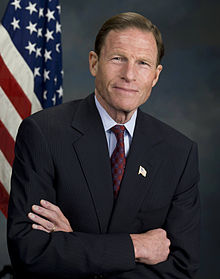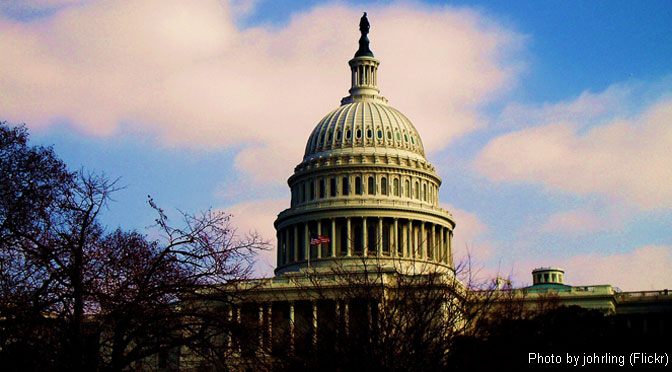Senator Richard Blumenthal (D-Conn.), a lawmaker with a solid pro-abortion record, has reintroduced the deceptively titled Women’s Health Protection Act. As first analyzed during its initial introduction in 2013, this is a dangerous piece of legislation.

Senator Richard Blumenthal
Blumenthal had acknowledged in 2013 that the bill was unlikely to pass Congress, even while pro-abortion President Barack Obama was in office and the Senate was controlled by pro-abortion Democrats. The chances are even slimmer now, with the White House, Senate, and House all controlled by pro-life Republicans.
Still, Blumenthal and his forces have pulled out all the stops. The bill is also sponsored by Senator Tammy Baldwin (D-Wisc.) and Representatives Lois Frankel (D-Fla.), Judy Chu (D-Calif.) and Marcia Fudge (D-Ohio). Blumenthal has an entire interactive page dedicated to the bill, and there is also an Act for Women! website. Close to 90 groups are part of the campaign, including abortion industry profiteers such as Planned Parenthood, NARAL Pro-Choice America, and the Center for Reproductive Rights, along with groups such as the American Civil Liberties Union.
Planned Parenthood tweeted support for the Act.
Thrilled for today’s reintro of the Women’s Health Protection Act to protect our health care access: https://t.co/4xGWOo9klM #ActForWomen pic.twitter.com/62KRDEIn3V
— Planned Parenthood (@PPact) March 2, 2017
When the bill was introduced, even the pro-abortion Rewire (formerly RH Reality Check) acknowledged that the bill is unlikely to pass, but couldn’t resist taking a stab at President Trump. Christine Grimaldi writes:
Although the legislation remains unlikely to advance in the GOP-controlled U.S. House of Representatives and U.S. Senate, the strong showing of original co-sponsors signals that Democrats in both chambers remain largely united in their resistance to the Trump administration’s anti-choice agenda.
Grimaldi categorizes abortion as a procedure which is similar to forms of legitimate health and medical care. The bill similarly get this wrong. With added emphasis, Grimaldi writes, “Under the Women’s Health Protection Act, neither the states nor the federal government could single out abortion providers for restrictions that don’t apply to similar medical services.” What medical procedure could be similar to ending the life of a human person? Even the bill’s text fails to explain it satisfactorily by simply noting that “[t]he term ‘medically comparable procedures’ means medical procedures that are similar in terms of risk, complexity, duration, or the degree of sterile precaution that is indicated.”
In a press release, Rep. Chu connects the reintroduction, which came a year after the decision’s oral arguments, with Whole Woman’s Health v. Hellerstedt, which ultimately struck down Texas laws regulating abortion. But as a Marist/Knights of Columbus poll found, Americans across varying demographics, politics, and views on abortion actually supported the laws that were struck down — including requiring abortionists to have admitting privileges at hospitals and requiring abortion facilities to meet ambulatory surgical center health standards.
This same type of dishonest language relating to the decision is also in the bill’s text:
The Supreme Court’s decision in Whole Woman’s Health v. Hellerstedt reaffirmed the constitutional right to abortion and struck down two unnecessary health regulations that created undue burdens upon access to abortion. Congressional action is necessary to put an end to these types of harmful restrictions. In addition, there has been a dramatic increase in the passage of laws that blatantly violate the constitutional protections afforded women, such as bans on abortion prior to viability.
Legal abortion is one of the safest medical procedures in the United States, safer than numerous procedures that take place outside of hospitals, as noted by the Supreme Court in Whole Woman’s Health. That safety is furthered by regulations that are based on medical science and are generally applicable to the medical profession or to medically comparable procedures.
…
Federal legislation putting a stop to harmful restrictions throughout the United States is necessary to ensure that women in all States have meaningful access to safe abortion services, a constitutional right repeatedly affirmed by the United States Supreme Court, most recently in 2016.
Chu’s press release boasts of “40 cosponsors in the Senate and 102 cosponsors in the House,” but such support has come solely from Democrats, making it a completely partisan effort. Act for Women! has aided in concealing this fact by failing to reveal the party affiliation of the Senate and House cosponsors.
Blumenthal, Chu, and Act for Women! claim to be about raising awareness that “[a]ccess to a constitutionally guaranteed right should not depend on one’s zip code.” But it is ironic that the bill’s supporters focus on a supposed “growing national crisis in access to abortion care” when the Roe v. Wade Supreme Court decision already made abortion legal in all 50 states, and is still the law of the land. Should Roe ever be overturned, abortion would not immediately become illegal in all states. Instead, abortion advocates would have to actually work to convince their fellow citizens to support making abortion legal, rather than relying on Roe, which overturned the will of the people in numerous states.
States are passing what commonsense regulations on abortion they can, but one wouldn’t know that from the description provided by Act for Women!. “Act for Women is a critical effort to ensure our elected officials are doing their part to protect our constitutional rights from not just clinic shutdown laws—but from a range of laws aimed at blocking women’s access to safe and legal abortion services and shaming women for their health care decisions,” the website reads.
State restrictions are listed in several sections of the bill’s text. According to the bill, “[state abortion regulations] do not significantly advance women’s health or the safety of abortion services, and they make abortion services more difficult to access.” The state regulations opposed by the bill include:
- Requiring “specific tests or medical procedures” connected to the abortion
- Requiring that the same person who provides “specified tests, services or procedures” before or after also perform the abortion
- Limiting the abortionist from prescribing drugs
- Limit on telemed abortions
- Any requirements or limitations “concerning the physical plant, equipment, staffing, or hospital transfer arrangements of facilities where abortions are performed,” which also includes admitting privileges
- Requirements that the woman make numerous visits to the abortion facility or other sites as part of determining she is sure with her decision, or, as the bill puts it, “make one or more medically unnecessary in-person visits…”
- Regulations on training for abortionists
- Bans on abortions prior to viability, which includes those having to do with certain procedures
- Restrictions on abortions after viability without exceptions for health or life of the woman
- Requiring women to provide a reason for their abortion before fetal viability
A section of the bill also prohibits measures which “single[] out abortion services or make abortion services more difficult to access” — in other words, the bill would do away with any and all restrictions or regulations on abortion. The bill would also disallow any regulation that “does not significantly advance women’s health or the safety of abortion services.” However, one could easily argue that safety measures — such as regulating abortionists’ training, requiring actual physician care beyond a screen time visit with no followup, and restricting abortion to much earlier in pregnancy (as abortion risks increase as pregnancy progresses) — are common sense measures which most definitely advance the “safety of abortion services.”
It isn’t pro-lifers who are rolling back women’s safety measures with regard to abortion. It is abortion facilities, like Whole Woman’s Health, which fail to advance the health of women because of their shoddy businesses.
This includes Planned Parenthood, the nation’s largest abortion provider. Speaker Paul Ryan (R-Wisc.) has revealed plans to defund the abortion giant, rerouting its government funds to Federally Qualified Health Centers, which outnumber Planned Parenthood facilities 20 to 1.
While abortion advocates are pushing for legislation even they know does not have a chance of passing, given the increase in pro-life laws across the country, pro-life legislation does have a chance, especially in light of President Trump’s commitment to signing such legislation into law.








